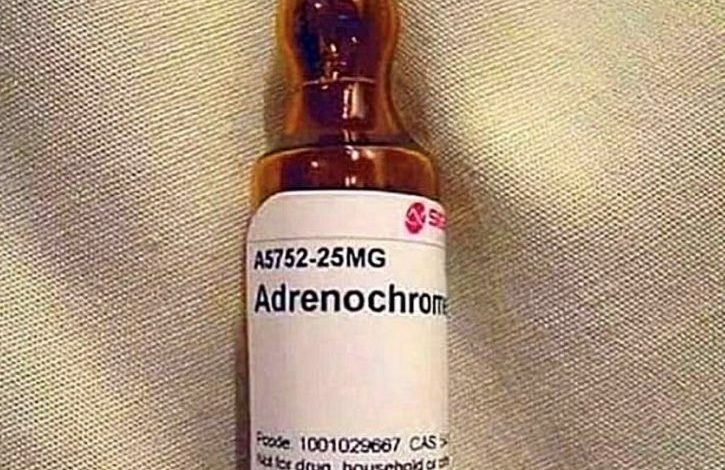Adrenochrome: Uses, Benefits, Side Effects, Warnings

Adrenochrome is a chemical compound produced by the oxidation of adrenaline, also known as epinephrine. It is not approved for medical use and is not considered a pharmaceutical drug.
There are several conspiracy theories surrounding adrenochrome, claiming that it is harvested from the adrenal glands of living children who have been subjected to extreme torture in order to extract the chemical compound. These claims are not supported by any credible evidence and are widely considered to be false.
In reality, adrenochrome has been studied for its potential effects on the human body, but research has been limited and inconclusive. It is not a controlled substance and is not commonly used or abused.
What Form Does Adrenochrome Come In?
Adrenochrome is typically produced as a crystalline powder, which can range in color from dark brown to reddish-black. It is not a controlled substance and is not commonly available for sale or distribution.
Adrenochrome injection may be available, however, injecting any substance without proper medical supervision and guidance can be dangerous and potentially deadly.
History
The history of adrenochrome is closely tied to the study of adrenaline, also known as epinephrine. Adrenaline was first isolated and synthesized in the late 19th century by the Japanese chemist Jokichi Takamine, and it quickly became an important tool in the study of the sympathetic nervous system and its effects on the body.
Adrenochrome was first synthesized in the 1930s by the British chemist Humphry Osmond, who was interested in its potential medical applications. Osmond believed that adrenochrome might have a role to play in the treatment of certain psychiatric conditions, including schizophrenia.
However, despite some early studies that suggested adrenochrome might have psychoactive effects, further research was inconclusive and the compound was never approved for medical use. In the decades since, adrenochrome has been largely relegated to the fringes of science and medicine, and it is not considered a mainstream topic of research or study.
More recently, adrenochrome has become the subject of various conspiracy theories. Aldous Huxley mentioned adrenochrome in his 1954 book The Doors of Perception, describing its alleged effects similar to mescaline intoxication despite not having consumed it.
In Anthony Burgess’s novel A Clockwork Orange, adrenochrome is referred to as “drencrom,” one of the drugs added to the characters’ milk.
Hunter S. Thompson also mentioned adrenochrome in his 1971 book Fear and Loathing in Las Vegas, where a character claims that it is derived from the adrenaline glands of a living human body. Adrenochrome is also a part of several conspiracy theories, such as QAnon and Pizzagate, where it is claimed to be harvested from the blood of child sex abuse victims by a cabal of Satanists for use as a drug or an elixir of youth.
However, in reality, adrenochrome can be synthesized and used for research purposes by biotechnology companies. These claims are not supported by any credible evidence and are widely considered to be false.
Medical Uses
Adrenochrome has not been approved for medical use and is not considered a pharmaceutical drug. While some early studies in the mid-20th century suggested that adrenochrome might have psychoactive effects and could potentially be used to treat certain psychiatric conditions, further research has not supported these claims, and the compound is not commonly used in medicine.
There have also been some studies exploring the potential role of adrenochrome in the development of certain diseases, including Parkinson’s disease and Alzheimer’s disease. However, these studies have been limited and inconclusive, and more research is needed to fully understand the potential effects of adrenochrome on the human body.
It’s important to note that there are no approved medical uses for adrenochrome, and it is not considered a safe or effective treatment for any medical condition. Any claims about the medical benefits of adrenochrome should be viewed with skepticism and should be thoroughly investigated before being taken seriously.
Does Adrenochrome Have Anti-Aging Effects?
No, there is no scientific evidence to suggest that adrenochrome has anti-aging effects. While there have been some studies exploring the potential role of adrenochrome in the development of certain diseases but these studies have been limited and inconclusive, and more research is needed to fully understand the potential effects of adrenochrome on the human body.
It’s important to note that adrenochrome has not been extensively studied for its potential health benefits. Any claims about the anti-aging effects of adrenochrome should be viewed with skepticism and should be thoroughly investigated before being taken seriously. If you have any concerns about anti-aging treatments or supplements, it’s important to talk to a qualified healthcare provider who can provide you with accurate and reliable information.
Adrenochrome side effects
Adrenochrome is not an approved pharmaceutical drug and has not been extensively studied for its potential side effects. However, early studies in the mid-20th century suggested that adrenochrome might have psychoactive effects and could cause symptoms such as hallucinations, confusion, and disorientation.
Additionally, there have been some reports of adverse reactions to adrenochrome, including nausea, vomiting, and dizziness. In some cases, high doses of adrenochrome have been associated with more severe symptoms such as seizures, cardiac arrhythmias, and coma.
It’s important to note that adrenochrome is not a controlled substance and is not commonly used or abused, so most people are unlikely to encounter it outside of conspiracy theories or fringe discussions. If you have any concerns about adrenochrome or any other substance, it’s important to talk to a qualified healthcare provider who can provide you with accurate and reliable information.





